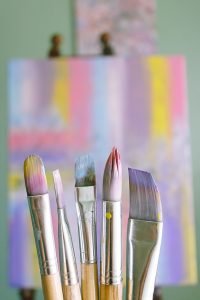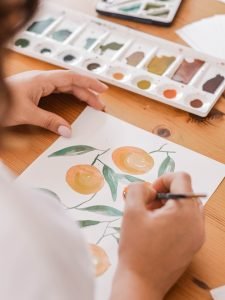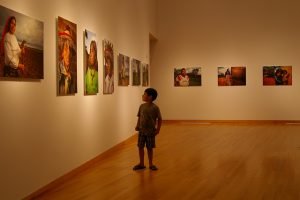Art is an essential part of a good education. Experts and teachers all say that we should be teaching art, both appreciation and the actual creation of art. And while I agree, this isn’t easy for every homeschooling parent to do. Books and videos are all great help. But at the end of the day, if you can’t draw, it is easy to feel overwhelmed trying to teach art to your child.
I went to school in a small, underfunded public school system. As a result, I received very little art instruction. But I wanted my kids to grow up making art and knowing more about art than I did.
I have worked with them to make art in many ways. We do some art explorations to learn about famous artists. After a few failed experiments, I have learned to keep art fun and easy. I want our art lessons to be pleasant memories for my kids.
Could you use a few ideas for adding art to your homeschool? Here is a list of ways to bring art into your homeschooling that even an art novice can do.
Expand beyond crayons, glue, and scissors.

One way of learning to make art is to explore art supplies. Set aside a budget to get your child some different art supplies each school year, and try out some things with them. Watching your experiment can give your child ideas for what they can do with their supplies. You can also look for videos on YouTube that demonstrate how to use things.
Some supplies to include:
Oil Pastels. These color like soft crayons and you can blend the colors with your fingers.
Chalk Pastels. These are more like chalk but for paper, and the colors can also be blended.
Watercolors. I like the sets by Prang for the best bright colors at the best price for a pan set in a box. Watercolors are great for experimenting with shades of color and intensity.
Model Magic. This super soft air dry clay can help your child bring almost anything to life. And it is much easier to use than regular air dry clay, while also being less messy.
Charcoal pencils. Learning to work with different shades of grey with different blending abilities is an interesting experiment.
Air Dry Clay. This stuff is great for learning to work with a more traditional type of clay and goes well with many different history lessons.
Acrylic Paints and Canvas. Every young artist wants their art to be “real” and getting the chance to pain on canvas feels the most real. When school supplies go on sale, you can often scoop up several at a discounted price. When introducing these to your child, you should encourage them to paint the entire canvas, and show them how they can let the paint dry, and then layer on top of their previous work. You can also use a pencil to sketch a shape onto the canvas for your child to paint around and color in, if your child is unsure how to use the canvas. The completed masterpieces make great gifts for the grandparents.
Just experiment!

Once your child is old enough to be trusted with things like permanent markers, take your child with you to an art or craft store and let them select what interests them. Craft kits, fabric paint, stencils, and ceramic glaze are all options.
Using art supplies, even without a lot of instruction, will fuel your child’s creativity and enhance their fine motor control. They can learn a lot about how the supplies work and what they can do with them through pure experimentation. Just setting aside some time each week to use the supplies is enough. If you can’t work it in every week, having a week of nothing but art once a semester, or a day of it once a month is fine too. Find what works for you.
Admiration and Appreciation
Another way we explore art in our home is by looking at art. I have several art books in the house which I try to integrate with our history lessons. Looking at art made in the same historical period we are studying gives it more meaning, even if I don’t know anything beyond what is in our books.
 When my children were small, I took apart art calendars to create a tiny museum in our home. A large calendar comes with at least 12 pieces of art that are high quality, larger than our usual books, and about a central theme or artist. The cost is usually cheaper than an art book, too. Although visiting an actual art gallery is interesting, it can often be an overwhelming experience for a child. Our personal galleries allowed us to visit the art at our own pace. We could take our time and be with the art, giving the children and me more time to really engage with it.
When my children were small, I took apart art calendars to create a tiny museum in our home. A large calendar comes with at least 12 pieces of art that are high quality, larger than our usual books, and about a central theme or artist. The cost is usually cheaper than an art book, too. Although visiting an actual art gallery is interesting, it can often be an overwhelming experience for a child. Our personal galleries allowed us to visit the art at our own pace. We could take our time and be with the art, giving the children and me more time to really engage with it.
I simply hung them in our school space, at the child’s eye level, and occasionally asked them to tell me which one is their favorite and why. Or I asked them to look for details by asking questions like “What do you think of the one with the seagulls?” I would keep the same art up for several weeks. While it was up I would take the time to learn a bit about the artist and share what I learned with the children.
Do you have some great ideas for sharing art with children? I’d love to hear them. Please leave a comment below.





0 Comments